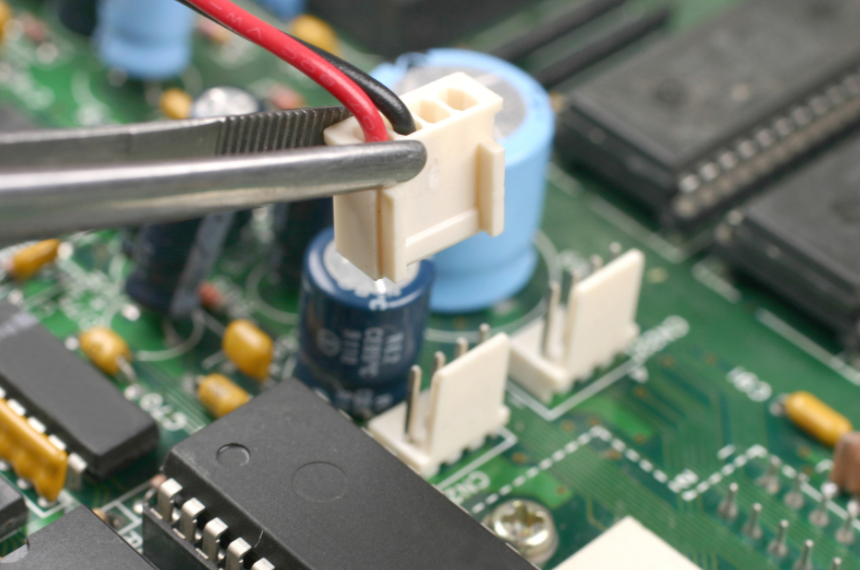How can you tell if a printed circuit board is bad? Electronics, like everything else, are not infallible – over time, they can degrade and fail for a variety of factors. While they are central to our daily lives, from medical devices, phones, and even airplanes, they can require maintenance and replacement.
Sometimes, however, the problem runs deeper. How can you tell if a printed circuit board is bad not because of use, but poor manufacturing or design? What kinds of PCB damage can be repaired, and which kinds can’t be repaired?
In this blog, we analyze the four most common reasons for PCB failure, and what can be done to resolve these issues.
What Are the Four Most Common Reasons for PCB Failure?
Environmental Factors
Before fabricating and manufacturing a printed circuit board, it is often critical to assess the environments they are going to be used in. Aerospace applications, for instance, can push printed circuit boards to the limits, requiring specialized construction and AS9100D certification to function properly. High temperature PCB design is intended to withstand glass transition temperatures greater than 170°C. Repeated high temperature environmental use can cut into the lifespan of printed circuit boards due to melting. When boards are not designed to work around high heat, components can be burnt and rendered nonfunctional. In these cases, boards cannot be repaired and must be replaced.
Heat isn’t the only thing that can damage printed circuit boards. Humidity can strongly influence board functionality during the assembly process, and conditions must be tightly regulated to ensure effective board design. Facilities must also be clean, as dust can disrupt signal transmission, leading to PCB malfunction.
Some more obvious forms of environmental damage to printed circuit boards is being submerged in water, lightning strikes, and electrical fires. Boards cannot be designed around these incidental environmental factors, and will need to be replaced.
Age
As a printed circuit board grows older, it may begin to malfunction. Components on a printed circuit board have a lifespan of their own, and once they have reached a certain age are more likely to fail. Resolving this may require replacement of individual parts, or in some cases, replacing the printed circuit board entirely.
Whether it is worth replacing a part or the entire board depends largely on two things: whether you have an expert available to diagnose issues with component parts on a board, and whether it is economically feasible to replace parts rather than the entire board. Aging components cannot be visually inspected in the way trace damage or burnt components are, meaning that an experienced technician skilled in board repairs is a requirement.
Poor Manufacturing
Manufacturing issues generally surface as bad soldering, connection issues, and loose components that haven’t been installed properly onto the board.
Mishandling
Physical damage to the board is another means by which PCB malfunction can occur. This happens most frequently when handling the board itself, rather than the shell it is contained within. However, this type of damage is also one of the easiest to fix. Caution should be taken, as inexperienced repair technicians can damage the board even further, requiring a complete replacement.
How to Test if a Printed Circuit Board is Bad
Diagnosing the issues behind PCB malfunction is the first step to resolving them.
To do this, you will need schematics to identify connections, a signal generator to identify and replace missing signals on a printed circuit board, and an oscilloscope to get more detailed information on electronic signal waveforms.
- Test the board while the power is on with all of the electrical components installed.
- Turn off the power and remove the electrical components on the board. This may require cutting wires and unplugging.
- Perform a visual inspection – this will determine whether your board has sustained physical or environmental damage. Scratches, cracks, misplaced solders, and burn marks can lead to shorting, and will require complete board replacement for safety purposes.
- If none of these are identified, connect the circuit board pack to a power source and use the oscilloscope to test the voltage of every connection on the schematic. Compare all of the results to the schematic. If they are not identical to what is listed, the circuit board is bad.
Repairing Trace Damage on a Printed Circuit Board
Trace damage generally occurs in two ways: a printed circuit board is mishandled, or continuous use has led to damage to the conductivity of a PCB. Trace is the network of insulation, wiring, copper, and fuses that form the functionality of a circuit board. There is always risk of a PCB malfunctioning, often due to overheating, dust, power surges, lightning, or simply due to general use.
A printed circuit board’s solder mask color is a remarkably important tool in helping visually diagnose trace damage. Green offers a high contrast color, hence its popularity. While colors like red, blue, or black are sometimes selected for aesthetic purposes, these color options make repairing a printed circuit board significantly harder.
Repairing trace pathways consists of replacing, removing, or coating silver and copper – since these are naturally bright, it is generally easy to detect issues. With miniaturization becoming an increasingly popular method of PCB manufacturing, however, a magnifying lamp may be required to identify trace damage.
At minimum, the following tools are required:
Conductive Pen – A tool that repairs and draws conductive traces on circuit boards
Overcoat Pen – A tool that applies a protective solution to insulate components
PCB Holder – a stand that firmly clamps down a printed circuit board during the repair process
Digital Multimeter – a test instrument that measures resistance, voltage, and current in a printed circuit board.
To repair a board, the broken trace must first be located. Once found, the solder mask overcoat needs to be removed with an Emory cloth, and the trace needs to be cleaned until you can see the copper coloration underneath. Use the conductive pen to coat the break with ink. Once the ink has dried completely, use the overcoat pen to cover the area with a protective layer, and allow that to dry as well. Your digital multimeter will indicate whether your repair was successful – you should get a reading of 0 Ohms.
Trace damage should be fixed as quickly as possible to prevent further damage to a printed circuit board. Thankfully, it is one of the easier kinds of damage that can be fixed in a printed circuit board. While trace damage can happen to any PCB over time, if an issue with a particular break is common among many identical boards, you may have an issue with poor design, fabrication, or manufacturing – a significantly more expensive problem. A good PCB manufacturer will be able to identify these errors before manufacturing, as well as testing them before they are sent.
Should I Repair or Replace?
Testing and fixing a printed circuit board can be an effective method of resolving issues that come with a bad circuit board, but is it worth it? Before answering that question, you should ask:
- How old are the components of a printed circuit board?
- Have I damaged the circuit board?
- Do I have the proper knowledge or access to a technician who can test components on a circuit board?
- Is the printed circuit board expensive enough to warrant repair vs. getting a replacement?
- Is the issue the fault of a bad manufacturer?
At Imagineering, we provide best-in-class printed circuit board printing and manufacturing that goes through the wringer before shipment. We build military-grade PCBs that can operate in the harshest conditions and are relied upon by devices used in the medical field. If you’re struggling with printed circuit board manufacturers who don’t not deliver the desired quality, contact us today for more information about our services.


